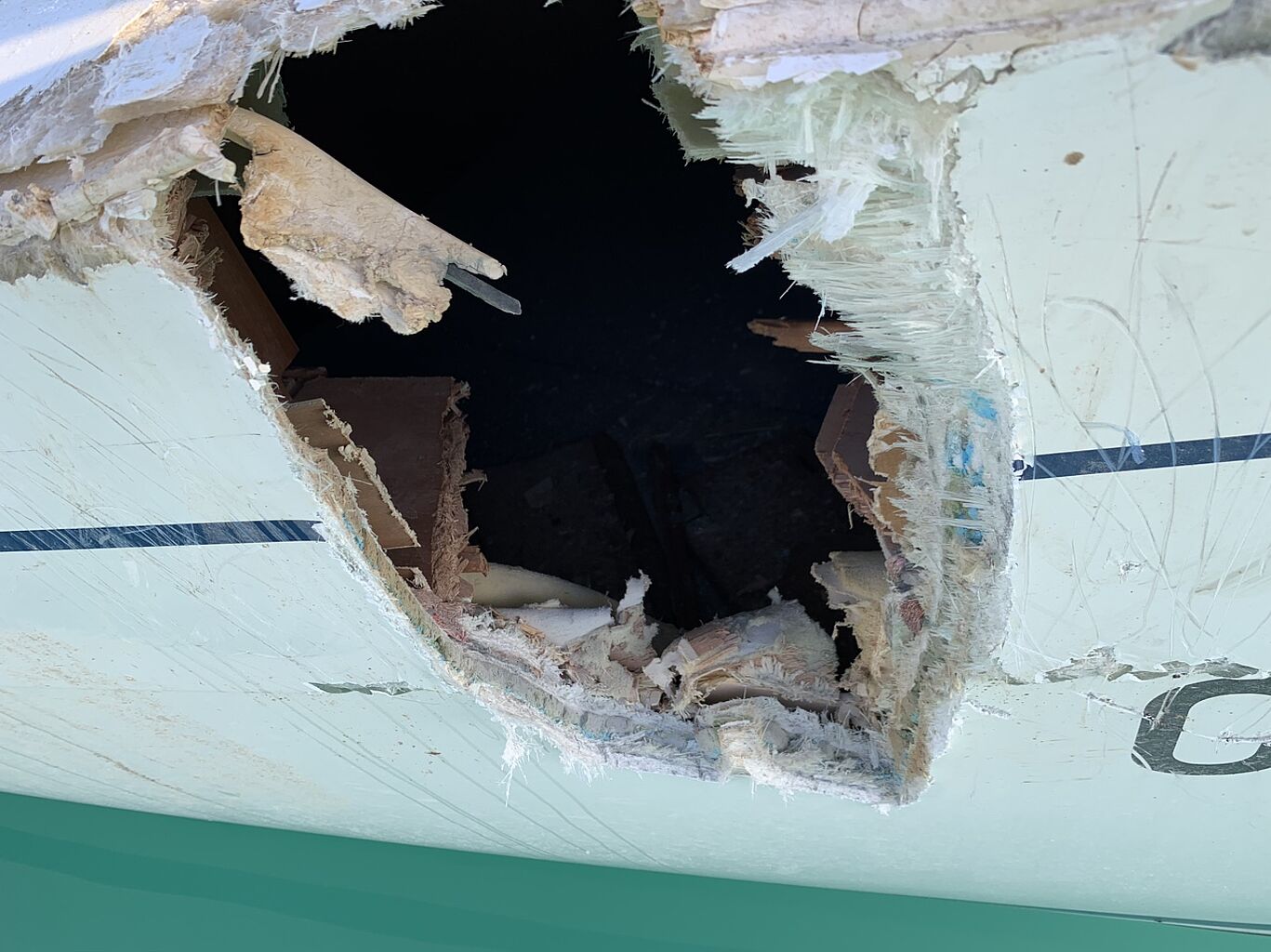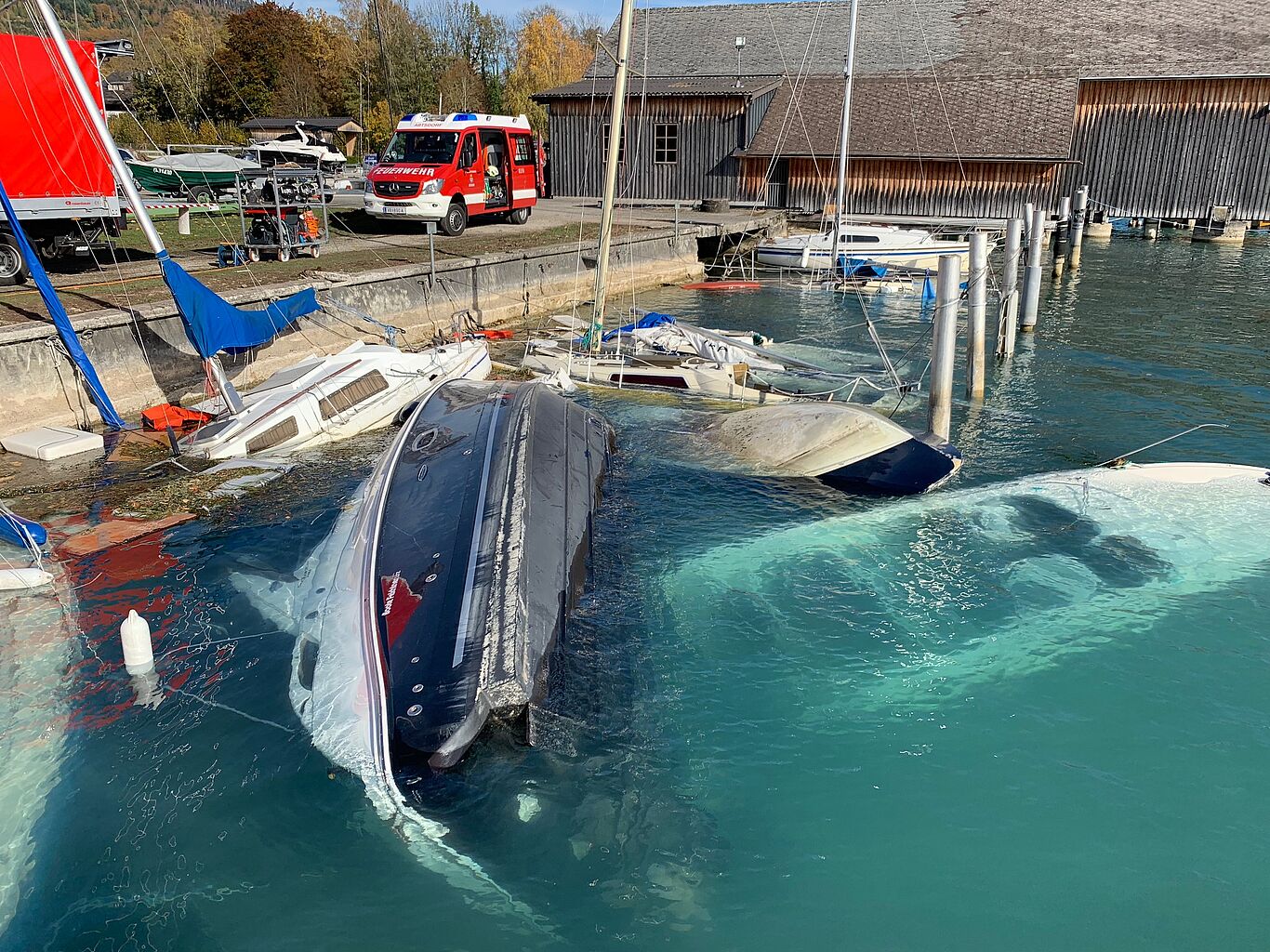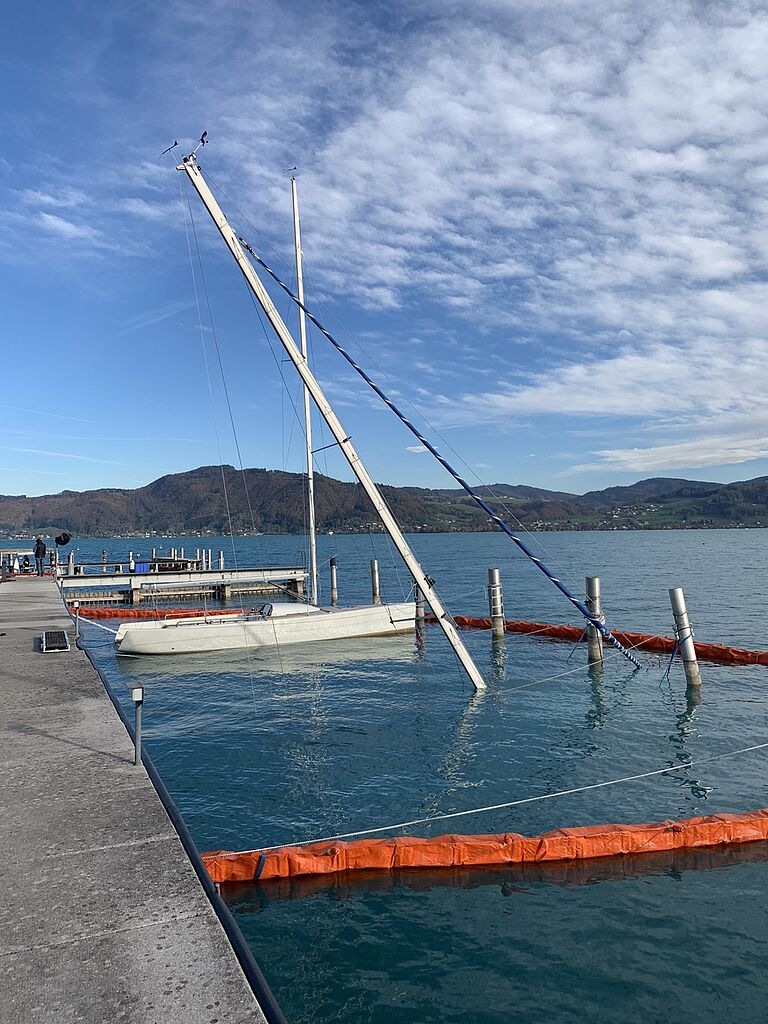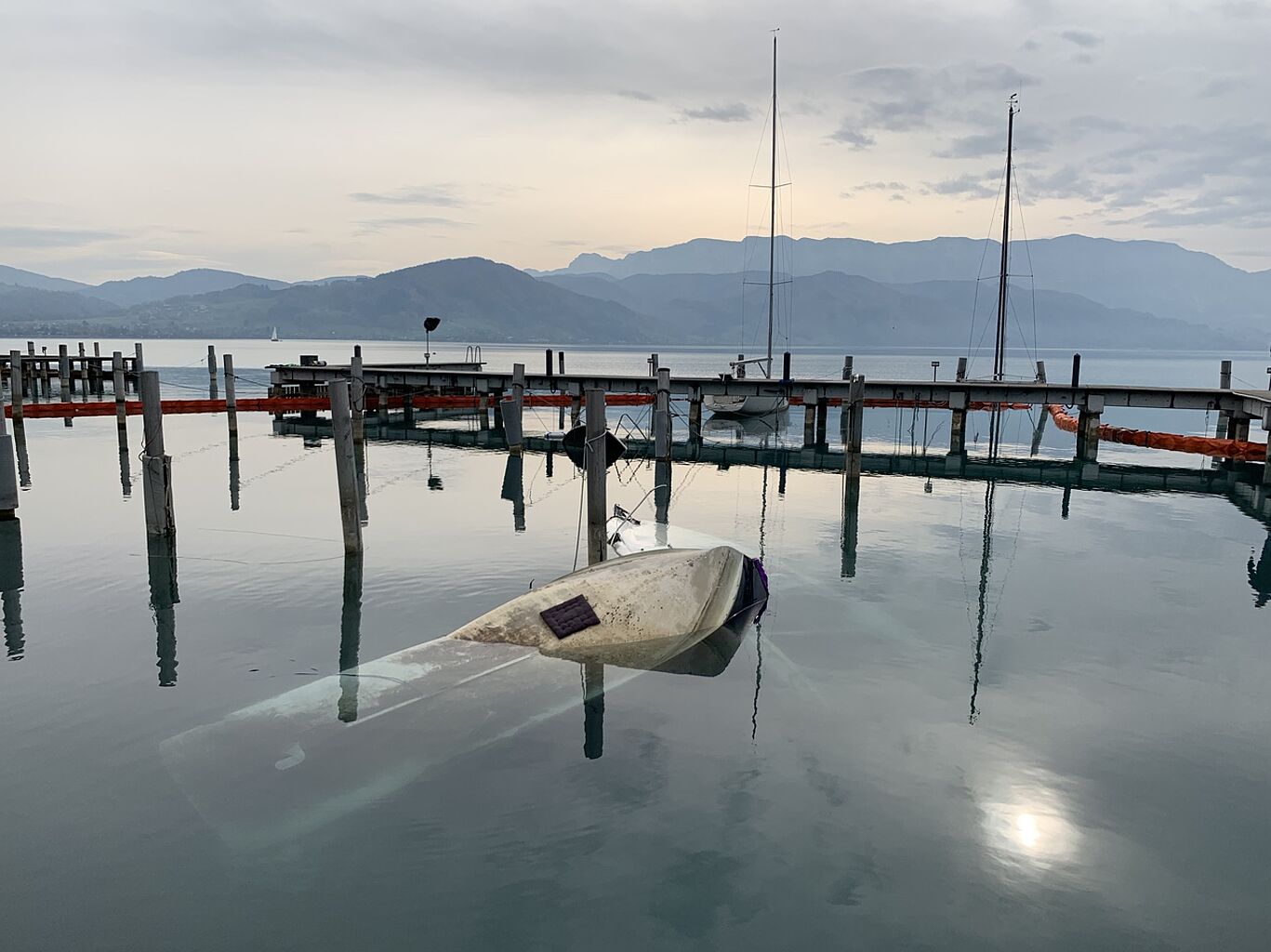Pantaenius Claims Archive
We have been digging through the international Pantaenius claims archive and have found some spectacular images showing damages to vessels at Lake Atter/Austria. In October 2018 Storm VAIA swept across that part Austria with wind speed up to 205km/h.
The storm season is now in full swing here in Australia and at Pantaenius we always encourage the following of some basic procedures to minimize any loss to your boat and its contents.

Double up on all lines
- Use extra line to double up the spring and bow lines.
- Position slip lines so that they reach higher up on the pilings. This aids in keeping the boat in place when the weather hits.
Strip away canvas and sails
- Strip away sail covers, dodgers, enclosures, Biminis ect. Don’t leave any canvas products on your vessel.
- Remove any windage that could cause the boat to ‘sail’ during hasty winds
- Take this sailing gear off the vessel
- Be sure to also remove the mainsail and headsail from the extrusion, bag them and remove them from the boat- the costly sails are often the first to get damaged.
Remove or sink dinghies
- Clear the deck of dinghies!
- If you have a hard dinghy then take it home with you or pull the boat plug and sink it in shallow water to shield it from potential damage.
Hang out extra fenders
- Put out extra horizontal fenders onto pilings and the hull where contact can be expected.
- If moored stern first then hang vertical fenders across the stern.
- Extra vertical fenders should also be hung on the side next to finger piers
Add chafing gear
- Synthetic docking line has elasticity that allows it to spring back and forth when under pressure. This action combined with the presence of sharp chocks can see an anchor or dock line completely cut through.
- To avoid this use sandpaper to smooth the edges of chocks. Furthermore, use rags, canvas, split hose or PVC tubing where it passes over a rub rail/toe rail or through a chock.
Seal the seacocks
- Shut off each of the seacocks (turning the handle perpendicular to the hose), this includes the head intake, sink and shower drain, engine raw water intake and head overboard discharge seacocks.
- The EXCLUSION to this is the cockpit drain seacocks which drain rain water.
Batten and tape hatches
- Secure all hatches and opening ports and tape around the inside edges for extra protection against water intrusion.
Secure Electronics, Charge Batteries, Check Pumps
- Shut down all the electronic equipment besides the bilge pumps- ensure batteries are fully charged to run the pumps.
- Test the float switch on each bilge pump by lifting the float switch tab which should case the pump to start within a few seconds.
Anchors
- Use a minimum of two anchors.
- Using three anchors spread in a Y pattern has proven to be effective in storm scenarios.
Provisions for after the storm
- Make sure your first aid kit is up to date and full.
- Ensure you have spare fuel, full gas bottles, batteries, a stock of canned, long life & dried food, lots of fresh water, disinfectant, dry towels and clothes.
Neighbours
- Check on your neighbours and anyone in the marina that you know may need an extra hand, ie: elderly or unwell. See if you can help secure some ropes or assist in stowing gear.
Following these guidelines can really reduce the impact wild weather can have on your boat and your wallet. Furthermore it will minimise the potential damage to the property of others. Overall, the simple but effective approaches to securing your vessel can truly make a difference in its preservation whilst also helping you comply with the agreement you have with your insurer.
Have a safe and happy season!
Pantaenius Claims Archive












